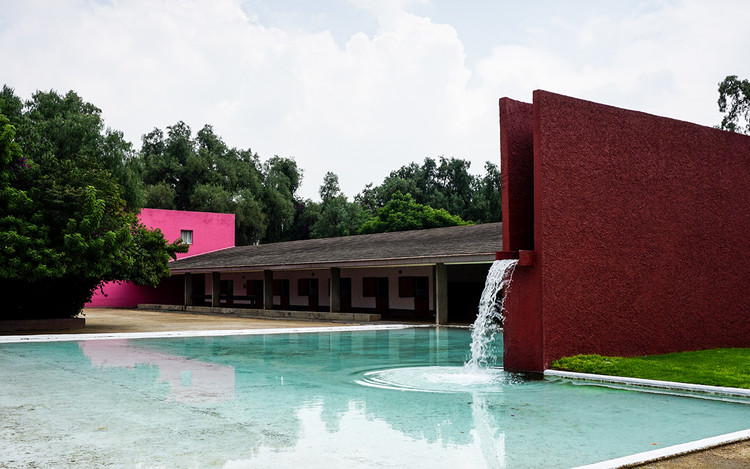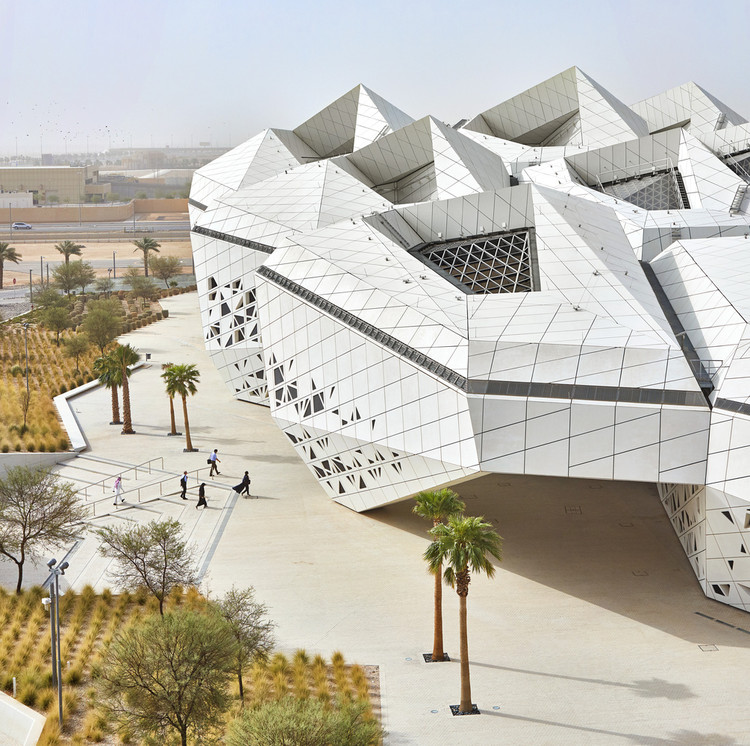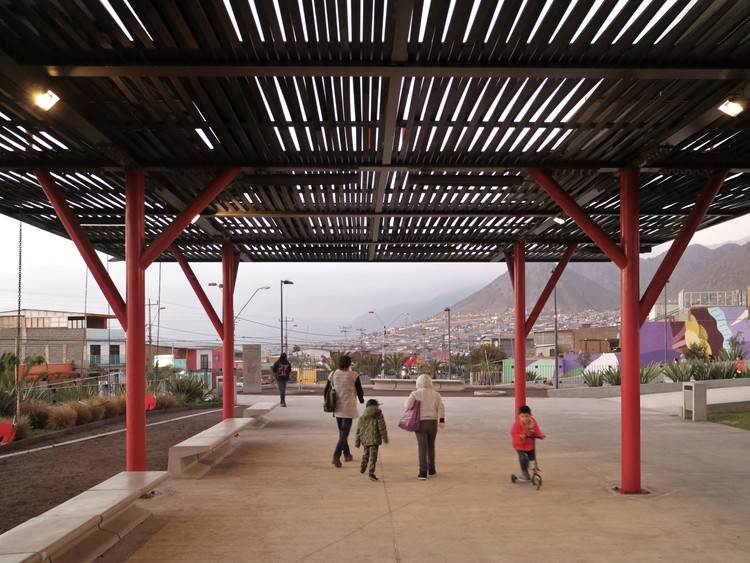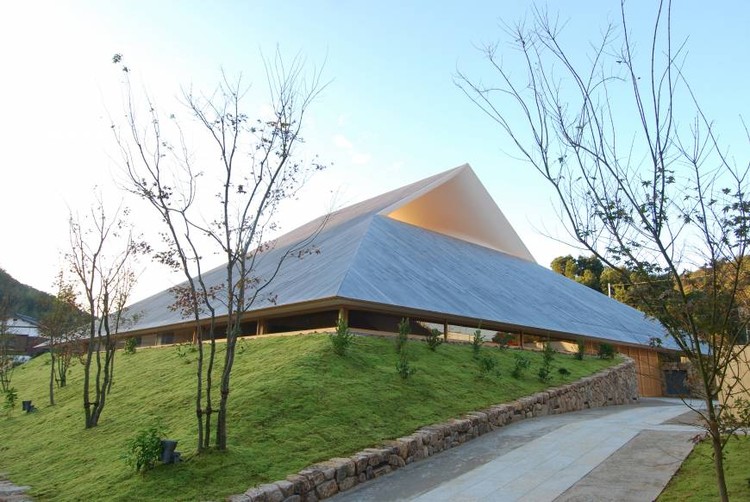
Creating a model for rendering does have its own set of rules. To get you up and rendering as quickly as possible, here are SketchUp's top five tips for prepping your SketchUp model for rendering.


Creating a model for rendering does have its own set of rules. To get you up and rendering as quickly as possible, here are SketchUp's top five tips for prepping your SketchUp model for rendering.

As a follow up to A Glimpse Into the Weird World of Architecture Students' First Assignments I wanted to explore what architecture schools from around the world are looking for in creating their institution’s community of young architects.
Approximately 3,550 students enroll annually in the United States into an accredited Bachelor of Architecture (BArch) program according to the National Architectural Accrediting Board (NAAB) and about 70% of that enrollment eventually graduate with a degree in architecture. There are 51 Accredited BArch programs in the United States compared to over 2,000 architecture programs worldwide. The United States has such a minimum amount of architecture schools relative to the world. An interesting fact is there are twice as many Master of Architecture programs in the U.S., but the initial quantity of student enrollment into each program is very similar.

On November 22, 1988, one of the most important and revered figures in the history of Mexican and international architecture died in Mexico City. Luis Barragán Morfín, born in Guadalajara and trained as a civil engineer left behind an extensive legacy of published works, conferences, buildings, houses, and gardens that remain relevant to this day. While Barragán was known for his far-reaching research in customs and traditions, above all, the architect spent his life in contemplation. His sensitivity to the world and continued effort to rewrite the mundane has made him a lasting figure in Mexico, and the world.
Undoubtedly, Luis Barragán's legacy represents something so complex and timeless that it continues to inspire and surprise architects across generations. It is because of this that, 30 years after his death, we've compiled this series of testimonies from some of Mexico's most prominent contemporary architects, allowing them to reflect on their favorites of Barragan's works and share just how his work has impacted and inspired theirs.

Urban Sketchers is an international non-profit organization dedicated to fostering a global community of artists who practice on-site drawings to enhance the artistic, narrative, and educational value of drawing. Connecting people from all over the world, the organization brings people in touch with their environment to illustrate drawings of their lived experiences.

This extract was originally published on Common Edge as "The Legacy of Christopher Alexander: Criteria for an Intelligent Architecture."
In his monumental four-volume book, The Nature of Order, Christopher Alexander talks about an intelligent architecture, responsive to human needs and sensibilities through adaptation to existing buildings and nature. This is a new way of viewing the world—a way of connecting to it, and to ourselves—yet it is very much the same as the most ancient ways of connecting.

London architecture today, for all the big-hitters that dominate the headlines (Foster, Rogers, Heatherwick), finds its richness in small studios. Peter Barber leads one such studio, where for the past 30 years he has led the development of some of the city’s most sensitive housing and housing developments.

Throughout history, markets have provided an important function in the exchange of foods, books, spices, everyday items, and even ideas. From Mexican Tianguis to North African Souks, they played an essential element in the configuration of urban spaces.
Different architects have approached this challenge, where spatial distribution plays a fundamental role in creating adequate logistics and circulation.
We've selected 20 markets and their plan and section to inspire your next project.

On a small strip of land between the Emscher River and the Rhine Herne Canal in Germany sits a rest stop whose colorful appearance belies its radical purpose. The structure’s artful design consists of pipes leading from two toilets and the Emscher (the most polluted river in Germany) that converge at a small community garden and drinking fountain. The garden is, in fact, a manmade wetland that collects, treats, and cleans the effluence from the toilets and river—making it drinkable.

This article was originally published by Autodesk's Redshift publication as "Respect: Architect Zaha Hadid, Queen of the Curve."
In March 2016, when world-renowned architect Zaha Hadid died of a heart attack at age 65 in a Miami hospital, the news sent shockwaves through the architecture community.
The flamboyant British designer—born on October 31, 1950 in Iraq, educated in Beirut, and known as the “Queen of the Curve” for her swooping, elegantly complex designs—was a legend in her time. She had design commissions around the world, been awarded the Pritzker Prize in 2004 and the Royal Institute of British Architects’ gold medal in 2016, and transcended the old-guard strictures of a staunchly male-dominated profession.

Architectural visualization has been around for centuries, with drawings and paintings depicting finished structures before they were built. In the 1990s, the movement of the industry from paper to CAD saw video added to the mix, with the new ability to produce walk-throughs and fly-throughs from design.
It was only a matter of time before architectural visualization professionals discovered real-time rendering, which can produce finished videos in a fraction of the time of traditional rendering processes. Initially intended for game development, real-time render engines have now reached a level of quality and photorealism that makes them ideal for presenting architectural designs.
With real-time rendering comes an unexpected bonus: new types of presentations for clients. Architectural visualization can now include immersive experiences like virtual reality tours, interactive, game-like projects, and cave automatic virtual environments (CAVEs) to present design in ways never seen before.

Alvaro Siza orchestrates, like no other, the experience of the visitor in his works. By means of compressions and decompression, openings and closings, volumes, voids and light, the Portuguese architect marks the paths, points of view, and perspective of the passage of time. In this photo essay, Ronaldo Azambuja photographed the Iberê Camargo Foundation ten years after its inauguration.

Using coiled wire fabric to divide interior spaces allows for both open and non-invasive partitioned areas. The installations add texture but maintain a soft, semi-opaque appearance. These functional room dividers are composed of coiled wire fabric woven into different thicknesses, which provide a flexible design and moldability.
Today we will highlight its use as an operable room divider, but coiled wire fabric can also be used as a ceiling treatment, exhibit and retail displays, wall coverings, artistic elements, and much more.

Since the end of World War II, Russia’s cities have grown in a Modern Soviet style. This prolonged use and application of the principles of architecture’s modern movement heavily affected the country’s development and urban expansion. But now, the new generations of architecture professionals are seeking to make a change.

Architecture is powerful, and like nuclear energy, it all depends on how it is used. While it can create uninhabitable municipalities, it can also create safer cities that improve quality of life.
In various examples, urban design has provided a response to deteriorated or abandoned public spaces. It has shown that distribution and lighting are essential, but that it is also necessary to consider who will be using the space and how to make it an environment that generates community.

Cuernavaca, located just a few hours from Mexico City, is one of the most visited places in the country thanks to its history, weather, and architecture. The city has eleven declared historical sites, such as the Cortés Palace, the Cuernavaca Cathedral, the Borda Garden, the Calvario Spire, Teopanzolco, Chapultepec Nature Park, the Cuernavaca Kite, and the Hotel Casino de la Selva, among others. For the past few years, Cuernavaca has experienced a boom in contemporary architecture, starting with the Tallera building which was built in 2010 by Mexican architect Frida Escobedo. The project gave life to the Siqueiros murals and all the history behind them.

WOHA's Kampung Admiralty Singapore in Singapore has been named the 2018 World Building of the Year at the World Architecture Festival, concluding this year's three-day event in Amsterdam. The building, which combines dedicated senior-housing facilities with a broad mixed-use program and a lush green roof, was selected from a strikingly broad shortlist that included works from offices such as Sanjay Puri Architects, Koffi & Diabate Architectes, Heatherwick Studio, Spheron Architects, and INNOCAD.

Our world revolves. Not just literally, as it does around the sun, but in nature’s every aspect. Seasons cycle into each other (though more erratically each year), waves trace and retrace the beaches with the shifting tide, flowers open, close, and turn to follow the path of the sun. Even we are governed by these circular natural systems. Maintenance of our circadian rhythms, a human connection to light, is so essential to our health that it is a required element in many contemporary building codes.
A recent exhibition at the MAK Vienna - Austrian Museum of Applied Arts / Contemporary Art, is showcasing the works of Sagmeister & Walsh, a NYC-based design firm investigating what makes beauty so appealing.
Titled "Beauty," the exhibition explores the notion that beauty operates as an independent function, and that in itself, it can be the primary motive for architecture: form is a function. In collaboration with the YouTube channel and design studio Kurzgesagt (In A Nutshell), this video released along with the exhibition explains why beautiful things make us happy.

“A model by Corbusier is the only image that brings to my mind the idea of immediate suicide.” - Ivan Chtcheglov
Despite their pranks and dirty politics, the Situationists may have been right after all. The death of architecture students will not be a result of excessive studio work, but will rather occur from the sermonizing repetition of modernist ideals that continue to be taught. In Le Corbusier's manifesto, Vers une Architecture (Toward An Architecture), he advocates for the adoption of modern architecture as the solution to 20th-century global crises, in a way that now seems rather limiting.
If the discipline doesn't move past the black-and-white photographs of the Barcelona Pavilion or the reductionist designs of the Bauhaus, students will continue to produce what may now be incorrectly associated with the “right architecture.” In order to break away from these stereotypes of what architecture should be, here are six explorations of building, curating and writing that resist these notions:

We all have that childhood memory of drawing a little house with a door and a window, a gabled roof, and a tree. But what sets architects apart from the rest of the population is that we continue to draw this after childhood, usually with a bit more technique. And just as our residential designs were becoming more complex and complete, the design of our trees needed to improve a bit as well (that broccoli-like shape would not please customers and teachers alike.) Although generally, trees are not the main focus of drawings, they play an important role in the composition of sketches, mainly to represent the scale, intended shading, or some intention of landscaping.

The 6th International LafargeHolcim Forum for Sustainable Construction will be hosted by the American University in Cairo from April 4 to 6, 2019. The LafargeHolcim Forum is dedicated to the topic of “Re-materializing Construction.” Keynote speeches, workshops and site visits will focus on strategies to reduce consumption throughout the material cycle from extraction to processing, transport, installation, maintenance, and removal.
The Forum pursues the question of how the building and construction industry can adapt to be leaner: with a smaller ecological footprint and not driven by the pretense of infinitely available raw materials. Hence, the Forum seeks to suggest radical solutions in the use of building materials.

Planning can, on occasion, feel Sisyphean. Emerging technologies, shifting economies, and changing governments can all enact dramatic and unpredictable change in short order. So what’s the use of planning for the future, let alone planning for a future nearly half a century away?

The greats of twentieth-century Colombian architecture were regarded for their genuine interest in brick. To this day, many of Colombia's iconic neighborhoods are filled with brick buildings.
Below, a selection of stunning Colombian brick projects —available in this My ArchDaily public folder as well.

This article was originally published on CommonEdge as "The Design Media Needs to Examine its Own Privilege."
Kate Wagner grew up in rural North Carolina. As a kid, her mom, who never went to college, worked in a grocery store deli and later in childcare. Her dad had a steady government job with a pension, and his time in the military meant he had the resources and benefits needed to get a college degree. Wagner describes her economic background as “one foot in the working class and one foot in the middle class, and it was always a negotiation between those two classes.” They were, she says, “just normal-ass American people.”